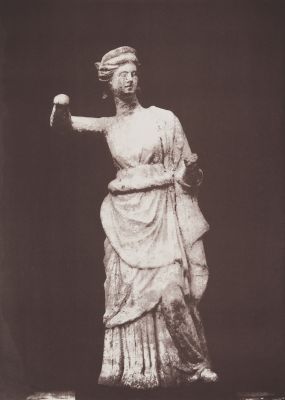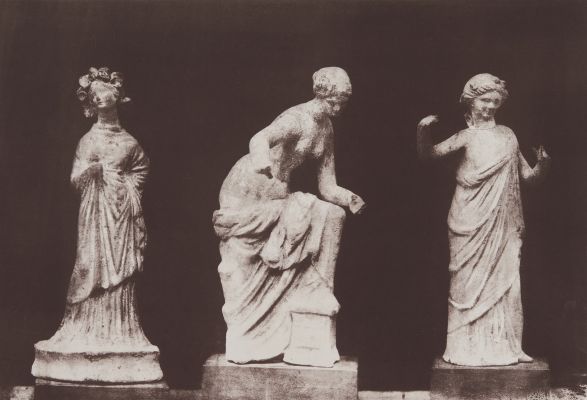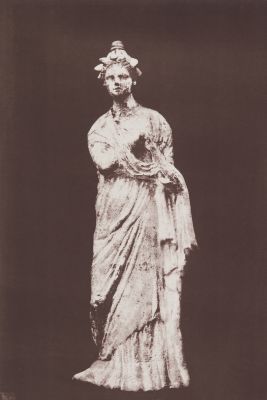
Title
Plate XXXIArtist
Laverdet, Marcel Gustave (French, b.b. 1816)Publication
Choix De Terres Cuites Antiques Du Cabinet De M. Le Vicomte H. De JanzéDate
1857Process
Photolithograph (Poitevin process)Atelier
PoitevinImage Size
35.5 x 25 cm
The 44 plates of this volume, printed in an edition of 160 copies, were produced by Poitevin in his workshop in the rue Saint-Jacques between June and October 1856. The order had been obtained for him by Edmond Beîtreel, who knew Laverdet well. [1]
Alphonse Louis Poitevin (1819 – 1882) was a French chemist, photographer and civil engineer who discovered the light–sensitive properties of bichromated gelatin and invented both the photolithography and collotype processes. He has been described as "one of the great unheralded figures in photography". In the 1850s he discovered that gelatin in combination with either potassium or ammonium bichromate hardens in proportion to the amount of light that falls on it. This discovery, significant for its capacity to facilitate the mass production of photographs, was later used by numerous figures such as Josef Albert, Joseph Wilson Swan, Paul Pretsch and Charles Nègre to develop subsequent photographic printing processes such as heliogravure, photogravure, collotype, autotype and carbon print. [2]
In 1855, Poitevin improved the process of photolithography and utilized it in his studio until 1857. On October 27, 1857, for reason of poor management of business, Lemercier bought Poitevin’s studio and patent, and used photolithography in his printing house. They created together a company in collective name for the utilization of the process. The profits were split down the middle. The company was later divided in February 1867 because the use of the patent was barely profitable, the stress of which put the two men at odds with each other. In 1859, Poitevin began legal proceedings against Lemercier for not having put the complete title “Procédé Poitevin” on the bottom of the plates, instead putting only “P. Poitevin,” and for paying less than the full cost of the patent. The judge ruled in January 1860, in favor of Poitevin. By 1867, Poitevin won the great Duc de Luynes competition for his process of photolithography and Lemercier received a medal from the SFP for his works on his technique. But because it was not cost efficient, the process was flawed, and in December 1866, Lemercier complained to Poitevin of not making any profits off his patent. [3]
Reproduced / Exhibited
Hanson, David A. Checklist of Photomechanical Processes and Printing, 1825-1910. , 2017. p. 183.
References
[1] Bibl. BSFP Feb. 1857, p. 45; AUBENAS 1988, LI p. 175-177 Aubenas Sylvie, Smith Marc H. La naissance de l’illustration photographique dans le livre d’art : Jules Labarte et l’Histoire des arts industriels (1847-1875). In: Bibliothèque de l’école des chartes. 2000, tome 158, livraison 1. pp. 169-196;
[2] wiki
[3] Rosen, Jeff “The Printed Photograph and the Logic of Progress in Nineteenth-Century France”, Art Journal, Vol. 46, No. 4, The Political Unconscious in Nineteenth-Century Art (Winter, 1987), pp. 305-311
https://gallica.bnf.fr/ark:/12148/bpt6k5604120s/f76.item











